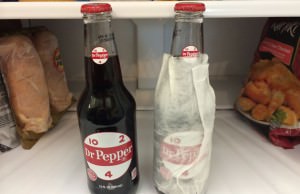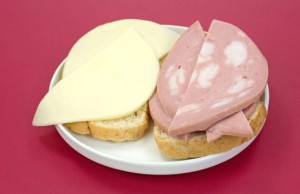22 Foods To Help You Gain Weight

Nutrition is full of misconceptions and myths. And somehow, we manage to break every single one of them, and the next day, we make others. What we believe turns out not to be true, and vice versa.
Sometimes, we need to ask ourselves – do we know anything about food? Anything at all? Let’s debunk some of the long-kept secrets about food that will eventually make you fat, whether you like it, or not.
1. Wheat bread and multi-grain bread
Most people think they’re doing themselves a healthy favor when they opt for “wheat bread” on their deli sandwiches, or pick up a pre-packaged loaf of 7-grain at the store, but the fact is that most mass produced productsare not much better for you than plain old white bread, as they’re made with refined grains, which means you’re not getting the full nutritional benefit of the actual whole grain.
A good way to tell whether your wheat bread is really whole is to read labels. If the first flour on the ingredient list is refined ( “bleached” or “unbleached enriched wheat flour”) it’s most definitely not “whole wheat” or “whole grain.
It’s essentially white bread with a brownish tint. When you’re in a restaurant and can’t see the label, take half the bread off your sandwich, which not only nixes calories and carbs, but also lessens your refined flour intake.

2. Muffins
Muffins, or “cakes for one” as they are commonly called, are absurdly marketed to us as breakfast foods, when they really should be considered decadent desserts and guilty pleasures.
Many pre-made muffins, even “healthy” ones like bran muffins, are completely oversized, and carry over 350 calories (others can get as high as almost 700 calories and nearly 40 grams of fat, and they’re packed with refined grains and sodium.
Homemade muffins are a different story, as you control the size and what goes into them, but most pre-made varieties are your ticket to fat camp. If you’re at brunch, and a basket of mini muffins suddenly shows up, you may take one since they’re so small, but you’ve gottastop there.

3. Crackers
Most people think crackers are better than cookies because they are not that sweet, and they think they contain less fat. However, crackers are deceiving.
Sweet and dangerous.Some popular brands have a buttery flavor that adds to the fat and calories.
While cheese and crackers can be an indulging snack, this is only really true if they are whole grain crackers with low salt.
Avoid cracker sandwiches at all cost!Especially the ones that come prepackaged with peanut butter or cheese in the middle. They are delicious, we know.
But, while these are a quick and easy snack, they are loaded with sodium, fat, and calories. Instead, you can make your own cracker sandwiches. Add various vegetables as a topping or try different cheeses. Look for crackers that are high in whole grains and low in fat, to make it 2 in 1.

4. Already-made salads
Just because something is called a “salad” does not make it automatically healthy. In fact, some salads have more calories than a Big Mac.
The offenders are salads packed with meats, cheese, bacon, croutons, and those drenched in dressing (yes, even olive oil).
The trick here is to stay away from already-made dishes like Chef’s Salads (which is packed with ham, turkey, eggs, cheese, and, usually a creamy dressing), Cobb salads (blue cheese, egg, bacon, chicken, and occasionally avocado), or anything with fried chicken, crispy strips, or heavy cream-based dressings. Craving a Ceasar salad? Ask for dressing on the side to make it challenging and dip your fork into it before each bite, as opposed to pouring it on. You’ll still have the sensation of it.
Again, all of the above salads can easily be prepped at home, and you can control exactly how much meat (try a slice or two of turkey or half a grilled chicken breast, as opposed to half a pound), cheese (one teaspoon of crumbled cheese, or one to two thin slices chopped), and other ingredients goes into them, which obviously makes them healthier.

5. Cranberry juice
Much like lemon or lime juice, pure cranberry juice is extremely tart and pretty much undrinkable on its own, so most types found in supermarkets and at restaurants, actually called “cranberry juice cocktail”, are packed with sugar and artificial sweeteners.
In fact, an 8-ounce glass of most store-bought cranberry juice has more sugar than a can of soda.
The alternative? Look for cranberry juice concentrate, which is often sold in very small bottles in the juice aisle. It’s purely the juice made of untouched cranberries, so it’s way too tart to sip on its own, but when a little is poured into water, you get the flavor and the many health benefits cranberries have to offer.

6. Granola
It’s ironic that we often attribute the word “granola” to healthy things, considering the fact that this crunchy snack is anything but.
Most mass-market granola is made with rolled oats, honey, and puffed rice, none of which has any real nutritional value. It’s also packed with sugar, fat, and calories (some at 400 a cup!) and low in vitamins and minerals.
Plus, granola is a food that’s hard to digest which can lead to bloating, gas, and other stomach issues. Why not snack on fiber-rich cereal or a handful of almonds instead, they are tastier.
While granola varies widely – some are made with whole grain oats, and others with more added sugars –the important thing is that an excess amount of granola can make you fat. Most granola bars are high in sugar, and you will probably feel hungry shortly after you have it. An excess of granola can actually make you gain weight.
Most granola cereals are high in fat and sugar. Look for the first ingredient to be whole grains, and find granola bars that are high in fiber. Most likely, these varieties will make you fuller longer. Try making your own granola using honey or a natural sweetener instead of sugar. A little granola as a topping or mix in for yogurt is fine, but remember to keep the portion small.

7. Sushi rolls (well, some)
While lots of sushi rolls make a sensible meal, there’s nothing wrong with fresh fish and a little white rice, but some types are packed to the gills with fat and calories.
As tasty as they are, standard spicy rolls are made with mayonnaise, Philly rolls are made with salty smoked salmon and cream cheese, and anything with tempura means it is deep fried.
And while a California roll isn’t unhealthy, per se, its abundance of avocado and imitation crabmeat aren’t the best choice if you’re already eating spicy rolls, or any fried food.
So, next time you’re out for sushi, choose a mix of rolls that only include fish and vegetables like cucumber, radish, scallion, or carrots, and treat yourself to one “treat roll” like Spicy Tuna. If you’re low-carbing it, ask for your rolls to be wrapped in cucumber instead of rice, and fill up on starters like miso soup, a little edamame, or a salad.

8. Gluten-free foods
If your body cannot tolerate gluten, occasionally indulging in treats made without it isn’t so terrible. However, it’s key to understand that most aren’t healthier, they’re just made without gluten.
According to Eat This, Not That, two of Glow’s Gluten-Free Gingersnap Cookies contain as much saturated fat as 10 McDonald’s Chicken McNuggets and more calories than seven Nabisco Ginger Snaps.
In addition, certain brands use eggs and canola oil to bind loaves of bread, which means more fat and calories per slice.
If you think you’re doing yourself a favor by eating gluten-free foods, even though you don’t have to, you’re wrong. Sixty-five percent of people who eat GF foods say they think they’re healthier, and 27 percent think it’ll help them lose weight, according to a new survey.
But here’s the thing, GF foods aren’t automatically better for you, and plenty of them can make you gain weight

9. ‘Juicing’ juices
We hate to break it to all you juicing-lovers, but sipping green concoctions all day isn’t as healthy as you might think.
If you’ve ever made your own, you’ll know that it literally takes pounds of produce to produce 16 ounces of juice, which is why we all think it’s so good for us.
As the website Quick and Dirty Tips stated, theoretically, we’re getting the nutritional equivalent of at least a dozen servings of fruits and vegetable in every glass of fresh pressed juice, but the problem is that juicing also concentrates the natural sugars in the produce while separating out the the fiber that would normally slow the absorption of sugars.
This means, if you drink the juice by itself, those sugars will be quickly absorbed into your bloodstream. Avoid replacing all your meals with juice unless you’re doing a strict liquid-only cleanse.

10. Flavored Greek yogurt
If it seems like Greek yogurt is everywhere these days, that’s because it really is.
The thick, creamy, protein-heavy snack first became popular in the States in the late 1990s by the brand Fage, but it’s now been co-opted by every yogurt brand under the sun, and lots have been doctored up with artificial junk.
Fruit-flavored Greek yogurt is the worst offender, as most contain fake flavors, sweeteners or added sugars. And, according to one health site, the protein content in flavored Greek yogurt (as compared with plain) is quite low.
Greek yogurts are higher in protein, keeping you feeling fuller longer. As with regular yogurt, choose non-fat or low-fat varieties, and choose Greek yogurt that is already mixed to avoid the excess sugar. Your best option is to buy plain yogurt and add your own fresh fruit.

11. Fancy coffee drinks
In its most basic form, coffee is pretty harmless, calorically speaking (black coffee clocks in at 5 calories per cup), but it can be hard to chug without adding in a little extra.
While a splash of skim milk is fine, it’s not fine to sip frappuccinos—which are filled with fat and topped with whipped cream—every day. In fact, a grande vanilla frap from Starbucks has 430 calories, 14 grams of fat, 72 carbs, and 69 grams of sugar. Yowza.
And while a skim latte is a better choice, a grande size has 130 calories and no fat, it’s still pretty caloric to drink every day. Instead, try limiting your latte intake to two a week.
Those drinks pack a higher calorie count, on average 240 calories, versus 75 for brewed coffee with cream and sugar, according to Pat Fiducia, chief executive for CalorieKing Publications, which tracks nutrition information for restaurant products. But many contain even more calories, sugar and fat.
A large Dunkin’ Donuts Frozen Mocha Coffee Coolatta with Cream, for example, contains 1,050 calories, 53 grams of fat and 127 grams of sugar.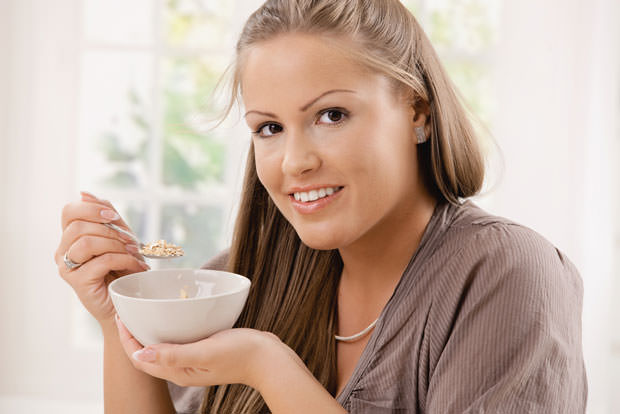
12. Pretzels, Cereal and Veggie Chips
Many dieters snack on pretzels and “healthy” veggie chips in lieu of other salty snacks like potato chips, believing them to be healthier alternatives.
Yeah. Well, neither is a wise choice. In the case of pretzels, you may as well be dipping a spoon straight into a bowl of sugar and eat it, as that’s precisely the way your body responds to this refined carbohydrate snack.
Don’t be fooled by the fact that they’re “fat-free” because it’s the carbs that are the culprit.
Your body prefers the carbohydrates in vegetables rather than grains because it slows the conversion to simple sugars such as glucose, and decreases your insulin level. Grain carbohydrates, like those in pretzels, will increase your insulin levels and interfere with your ability to burn fat, which is the last thing you want if you’re trying to lose weight.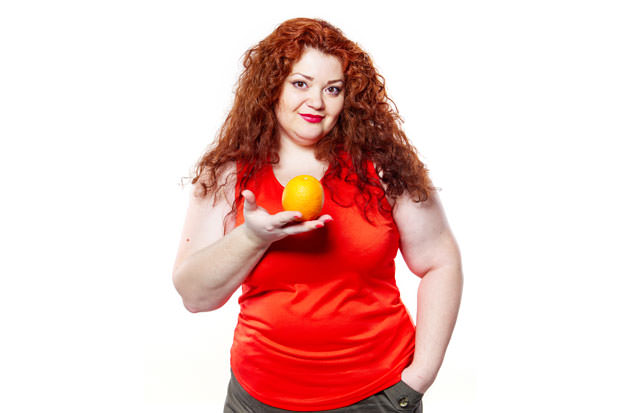
13. Fructose!
This sugar is often deemed a “healthy” type because it’s the kind that exists naturally in fruit. And if you were to only eat fructose in a piece of fruit or two a day, you’d probably be just fine.
The central issue is that fructose is now used in virtually all processed foods, whether you’d suspect the food would contain a sweetener or not. Case in point: the number one source of calories in the United States is high fructose corn syrup (HFCS) in the form of soda.
Again, if you’re able to keep your total fructose consumption below 25 grams per day, then it’s not typically going to cause you or your family any major health issues. Unfortunately, while this is theoretically possible, precious few people are actually doing that. 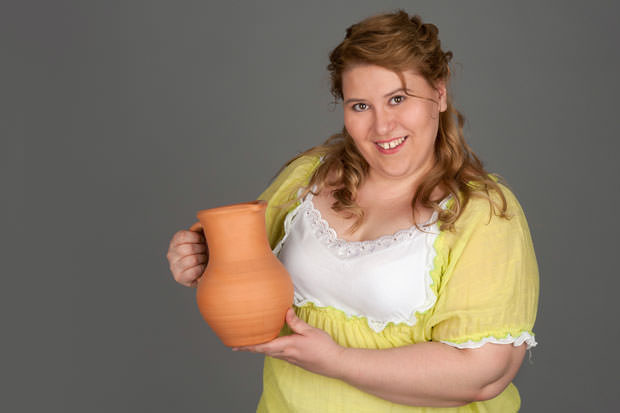
14. Coconut Oil, Milk, or Yogurt
This tropical tree nut is a mainstay of vegan eating and very high in saturated fat, the type that can increase bad cholesterol, as well as calories.
It’s used as cooking oil, as a creamy base for soups and stews, and as a non-dairy ice-cream alternative. And with good reason, it’s delicious! But just like cooking with cream and butter, it should be used in moderation, not as an everyday food source.
Plus, there’s no evidence proving that this type of saturated fat is any healthier than the type found in animal products.
Coconut milk is a rich source of dietary oils and is well-known for lending a rich and decadent flavor to food. Cooking with coconut milk will heighten the calorie content and will ensure proper weight gain, if consumed on a regular basis.

15. Salmon
As you’ll see, many of the best weight gaining foods are fish or proteins. In the fish category, salmon is probably your best bet.
It’s great for putting on mass, but it’s still incredibly healthy, because the fats and nutrients it contains are necessary. It’s a great heart healthy food, as well.
Even though it is high in calories and fat, like all fish, salmon is actually good for you.
One of the main benefits of Salmon, is the amount of natural Omega-3 it contains.
If you are looking for food that is high in protein, then yuo should be eating some meat or cheese. Although, fish does have a high protein content too.
Unless, you have been eating very little or are eating a lot of Salmon, you will not gain from it.

16. Almonds
Nuts and seeds are some of the best weight gaining foods as well. Almonds fall at the top of that list, and they sure are delicious! It’s better if you eat them just as they are, rather than roasted.
If almonds aren’t your favorite, you can also choose among sunflower seeds, sesame seeds, and pumpkin seeds.
One of the healthiest sources of legume protein and essential fatty acids, a rich layer of almond butter is the perfect topping for salads, toasts and desserts. Regular consumption leads to better skin and hair growth, along with significant weight gain.
Almonds are packed with protein, healthy fat and other nutrients, but unfortunately they’re also packed with calories. While an occasional handful or two of almonds won’t throw any healthy diet plan off track, overdoing it on a regular basis could contribute to gradual weight gain unless you monitor your overall calorie intake.

17. Avocado
There are a lot of carbohydrates that can help you gain weight, too, and avocados are probably the best of them.
This oily fruit is full of healthy fats, and it can make a delicious addition to any meal. As an added bonus, it makes your skin super soft, too.
Also known as butter fruit, their rich monounsaturated fatty acid content is an excellent mix for soups, salads and dips. They load up the body with healthy nutrients and essential fats, so that you can gain weight in a healthy way.
Each of the small, dark-skinned avocados from California contains about 227 calories, 2.7 grams of protein, 11.8 grams of carbohydrate and 21 grams of fat. The majority of the carbohydrates is in the form of fiber, with 9.2 grams, or 37 percent of the daily value, and only 2.9 grams of the fat consist of unhealthy saturated fat. The rest mostly comes from healthy monounsaturated fats. The green-skinned Florida avocados tend to be much larger, so a whole avocado has about 365 calories and 30.5 grams of fat. A cup of cubed avocado of either type has approximately 240 calories.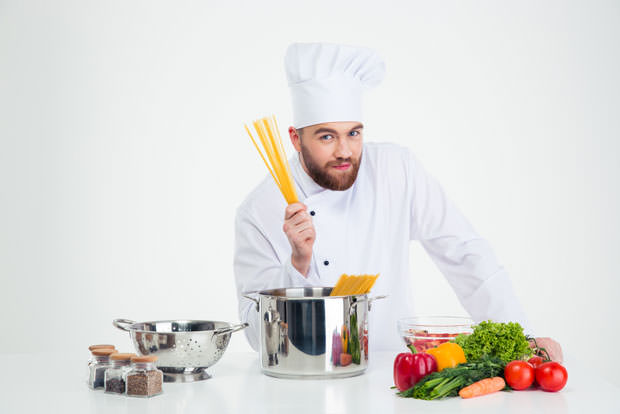
18. Pasta
If you want to bulk up fast without relying on unhealthy fats, definitely go for pasta.
In the grain group, it’s one of the best things you can eat. However, whole wheat pasta is by far the most superior choice.
The problem with pasta is not the pasta itself, it’s more about portions. If you eat too much of anything, and don’t burn it off, your body will store it as fat. So whether it’s bread or pasta or rice, it’s about the volume and extra calories, not about the carbohydrates themselves. Add to that the heavy sauces and high-calorie cheeses, and no wonder pasta has such a bad rap.
They key here is practicing portion control. Pasta is okay in moderation. Dietitians recommend 2 or 3 ounces of uncooked noodles per person – or half of a one-pound box to serve a family of four.

19. Butter
Many of the best weight gaining foods contain comparably healthy fats.
Dairy can be the best way to get those fats, and nothing beats butter! Honestly, eating butter is one of the most delicious ways to gain weight. Any southerner can tell you that.
Dietary fat has more calories than other nutrients, containing 9 calories per gram compared to the 4 per gram you get from carbohydrates and proteins. Thus, eating fatty foods may make sense in theory, if you want to gain weight. However, the American Council on Exercise, or ACE, stresses the importance of avoiding saturated fat. This type of fat is usually solid in form and comes primarily from animal sources, with the exception of coconut oil, palm oil and palm kernel oil.
Butter contains 35 calories per teaspoon, all of which come from fat. This serving size gives you 2 g saturated fat, or 10 percent of your daily value, or DV, based on a 2,000-calorie diet.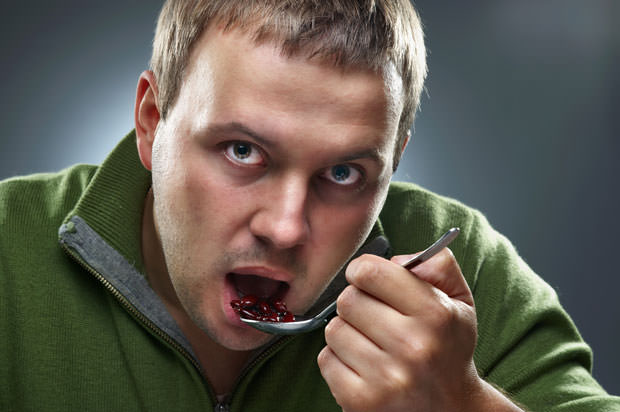
20. Beans
Beans are good alternatives for vegetarians, who want to partake of the benefits of animal proteins.
When cooked in rich sauces, a bowl of beans can contain as much as 300 calories. Include some Pita bread along with it for a hearty meal, which is not only nutritious but also conducive to weight gain.
Burning 500 calories each day allows you to lose about 1 lb. a week, so adding those 500 calories will add pounds. For example, 1 cup of canned white beans contains 299 calories, according to the U.S. Department of Agriculture National Nutrient Database. Adding one-quarter cup of those beans to your salad or pasta every day gives you more than enough extra calories to start gaining weight.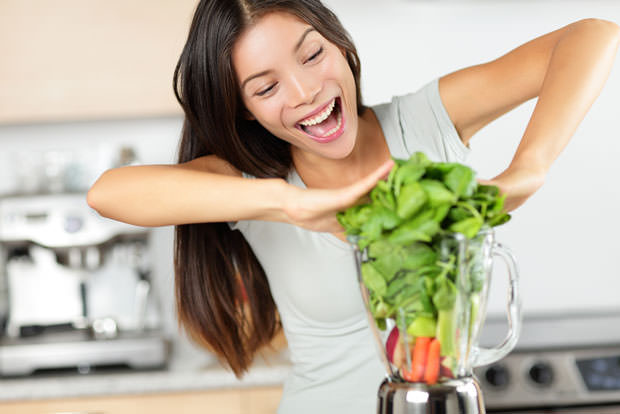
21. Root vegetables
Root vegetables like potatoes are rich sources of carbohydrates and complex sugars. When consumed in excess, they tend to result in healthy fat deposition.
Consuming a sizeable portion of baked or grilled potatoes in salad, sandwiches and other meals, will help in putting on weight faster.
Potatoes seem to be a particular culprit for weight gain and diabetes.
A study from Harvard School of Public Health that tracked the diet and lifestyle habits of 120,000 men and women for up to 20 years looked at how small food-choice changes contributed to weight gain over time.
People who increased their consumption of French fries and baked or mashed potatoes gained more weight over time, an extra 3.4 and 1.3 pounds every four years, respectively.

22. Peanut butter
Fact is,the bread (even whole grain) would cause you to store body fat far faster than peanut butter.
It is known to digest slowly. This is a good thing in that it prevents insulin levels from spiking. Insulin causes blood sugar to be stored as body fat. It is all about Insulin.
Foods high in fat do not automatically store as fat. Everything we eat gets digested into the same thing,those are blood sugar and fatty acids.
Natural peanut butter has no dairy in it. It’s just peanuts in their own oils. Other PB’s include “hydrogenated oils”. These are not good as they are transfats. Nothing in our bodies can process transfats. They are nothing but bad, in any amount taken. So if the label has the work Hydrogenated. .. don’t consider bying it.


